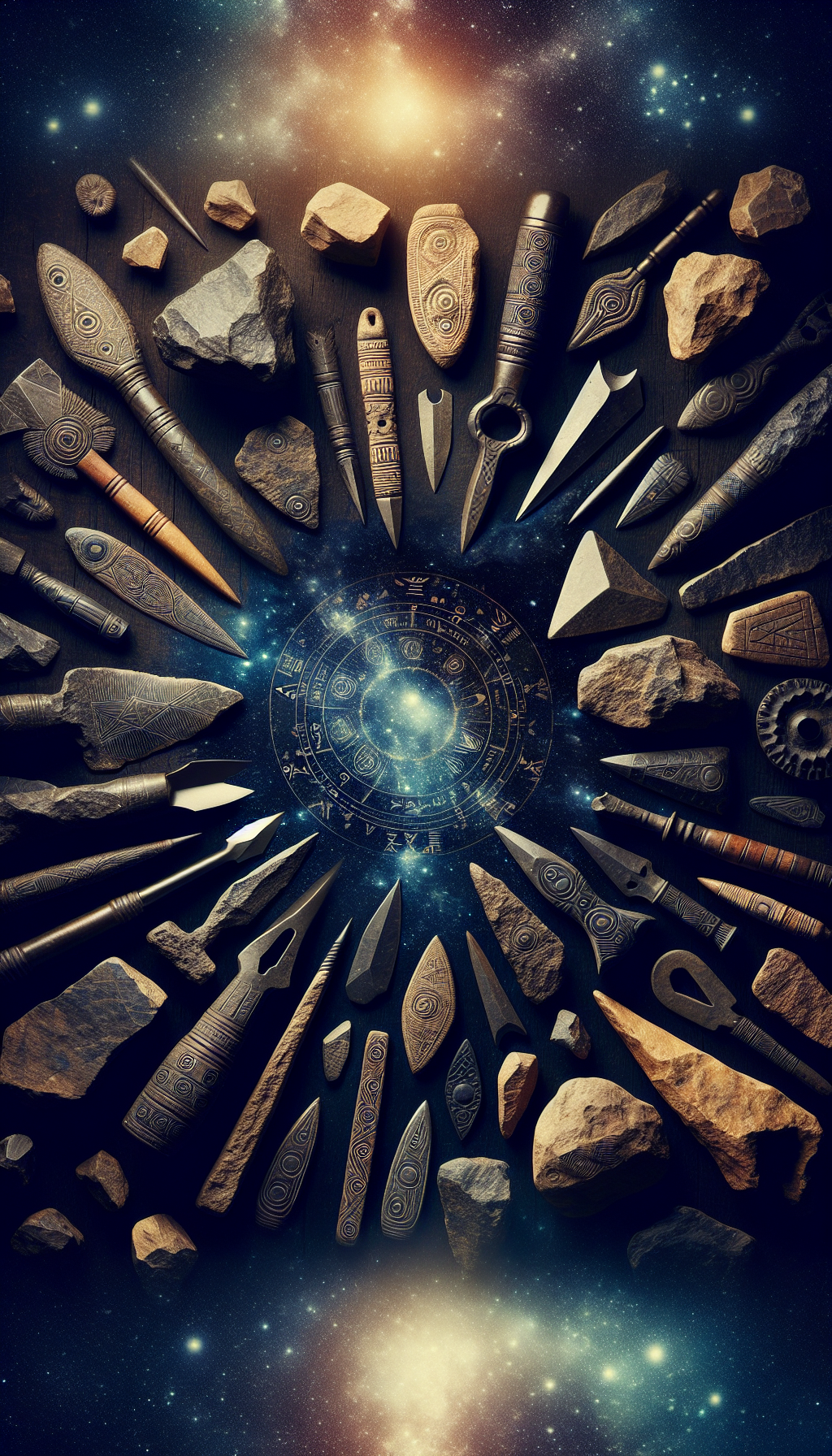Unlocking The Past Expert Guide To Identifying Indian Rock Artifacts With Holes
For many collectors and appraisers, “Indian rock artifacts with holes” usually refers to Native American stone objects intentionally perforated for suspension, hafting, or ceremony. These include bannerstones, gorgets, pendants, plummets, perforated net weights, and certain stone pipe forms. Distinguishing authentic pieces from natural lookalikes and modern fabrications requires careful, methodical observation—and a firm commitment to legal and ethical collecting.
This guide equips you with the diagnostic features, typology cues, and appraisal considerations needed to evaluate drilled stone artifacts responsibly.
Start Here: Ethics, Law, and Provenance
Before any visual assessment, confirm you are on solid legal and ethical ground.
- Know the law: It is illegal to collect artifacts from federal and many state lands without permits. Human remains and associated funerary or sacred objects are protected by law. Penalties can be severe.
- Avoid site disturbance: Do not dig, metal-detect, or remove artifacts from archaeological sites. Surface finds on private land require the landowner’s permission and compliance with state laws.
- Provenance matters: For appraisal, documented ownership history and lawful origin dramatically affect value. Ideal documentation includes findspot (if known), date and circumstances of discovery, permissions, earlier collection labels, and any previous appraisals.
- Cultural respect: Use “Native American” when possible; engage tribal experts and professional archaeologists where appropriate. Some categories (e.g., shell gorgets with sacred imagery) may be culturally sensitive and not appropriate for trade.
Provenance is not just a value multiplier—it is an authenticity anchor. Lacking provenance, your evaluation must rely more heavily on technical attributes and comparative typology, and the market may discount the piece.
What Counts as a Rock Artifact with a Hole?
The most commonly encountered stone categories include:
- Gorgets: Flat, shaped stone ornaments (often slate or siltstone) drilled with one or more suspension holes near an edge or end. Typically Late Archaic to Woodland periods in many regions.
- Bannerstones: Carefully shaped and polished stones—often symmetrical “butterfly,” “hourglass,” or “winged” forms—with a central perforation. Widely attributed to atlatl (spear-thrower) associations, though functions may vary. Typically Middle to Late Archaic.
- Pendants: Smaller, varied shapes (teardrops, trapezoids, zoomorphic forms) with one perforation for suspension. Materials include slate, steatite, schist, and others.
- Plummets: Streamlined, often ovoid or teardrop stones with a groove or perforation for suspension; frequently made from hematite or other heavy stones. Use may be ornamental or functional as weights.
- Perforated net weights: Less common than notched sinkers; when present, perforations are often near the edge and show utilitarian wear.
- Pipe components: Some stone pipe bowls or stems include drill holes or through-bored elements. Steatite and catlinite are common materials in certain regions.
These categories vary by region and period. Local typology guides and comparative collections are invaluable for narrowing attribution.
Natural Hole or Human-Made Perforation?
Not all holes are cultural. Natural processes or modern tools can deceive. Use a loupe or low-power microscope (10–40x) and a strong raking light to examine these indicators:
Human-made perforation indicators:
- Hourglass profile: Many ancient holes were drilled from both faces using bow or pump drills with abrasive slurry, producing a wider entrance on both sides and a narrower waist. A symmetrical hourglass cross-section suggests ancient technique.
- Pecking–grinding sequence: On harder stones, makers often pecked a pilot depression, then abraded with sand and water. Look for a rougher pecked “seat” transitioning into smoother, abraded walls.
- Concentric microstriations: Fine, irregular concentric lines from abrasive-laden rotation may be visible under magnification. They should look subtle and not mechanically uniform.
- Bevel or countersink: Many suspension holes are slightly beveled or countersunk to prevent cord wear. Authentic beveling blends with surrounding polish and shows edge rounding consistent with age.
- Edge wear and polish: Genuine use leaves rounded edges at the perforation and sometimes polish from cordage. Wear should be consistent with other high points on the object, not confined to the hole alone.
Natural or modern-drilled indicators:
- Perfectly cylindrical, uniform bores: Modern twist drills produce straight, constant-diameter holes with spiral or chatter marks and sharp lip edges. A single-sided cone from a spade bit is also suspect.
- Glassy, heat-affected stone: High-speed rotary tools can leave localized heating sheen or microcracks. Ancient drilling with slurry does not.
- Vuggy or solution holes: Geological cavities often have irregular, undulating walls, crystallization, or secondary mineral deposits that cut across surfaces indiscriminately rather than in functional locations.
- Coastal bio-erosion patterns: Marine borers leave distinctive tubular holes with biological signatures; context and material should make sense (e.g., shell, beach stones).
- Incongruent patina: Fresh, chalky drill dust or new edges within otherwise patinated surfaces indicate recent alteration. Be wary of applied stains or oils meant to mimic age.
Context matters: A sophisticated modern fake can mimic hourglass drilling. Cross-check hole morphology with overall form, material, finish, and credible provenance.
Typology and Time: Key Forms and What to Look For
Bannerstones
- Materials and finish: Slate, banded slate, siltstone, and occasionally exotic stones. High symmetry and fine polish are typical, with a central, carefully drilled hole.
- Hole features: Central perforation often hourglass-shaped with polished interior. Slight countersink on faces is common.
- Red flags: Overly perfect machine symmetry; drill marks that are linear and uniform; modern tool chatter; edges and hole lips sharper than surrounding surfaces; oddly placed or off-axis holes inconsistent with known forms.
Gorgets
- Materials and form: Flat slabs of slate, siltstone, schist; shapes include rectangular, trapezoidal, elliptical, and stylized forms. One to multiple holes near an edge or end for suspension/attachment.
- Hole features: Beveled or countersunk holes to reduce cord wear, sometimes with biconical (hourglass) characteristics. Wear should be consistent with suspension orientation.
- Red flags: Holes dead-center without suspension logic; fresh drill residue; lack of surface weathering on hole edges; machine-perfect countersinking.
Pendants
- Materials and form: Wide variety; look for intentional shaping, symmetry appropriate to form, and polish or smoothing on edges.
- Hole features: Usually single hole near the top. Expect edge wear at the suspension point and consistent patina inside the hole.
- Red flags: Random pebble with a single modern hole; hole diameter oddly large for scale; jagged metal-drill chatter inside.
Plummets
- Materials and form: Dense stones like hematite; elongated, tear-shaped with groove or perforation near the top for suspension.
- Hole features: If perforated, expect careful countersink and wear; if grooved, examine for pecking and smoothing consistent with cord binding.
- Red flags: Metallic grinding flats; perfect machine symmetry on hematite without micro-pecking traces; sharp, unworn grooves.
Perforated net weights
- Materials and form: Often expedient stones with perforations or notches for fastening nets. Wear is utilitarian and less polished.
- Hole features: Placement and size should make functional sense; expect edge rounding and microchipping from use.
- Red flags: Decorative stone drilled once with no logical placement; immaculate polish inconsistent with utilitarian function.
Pipes (stone bowls and stems)
- Materials and form: Steatite, catlinite in certain regions; through-bored stem channels and bowl cavities.
- Hole features: Bored passages should show abrasion pattern consistent with softer stone; buildup of ancient residue may be present.
- Red flags: Modern drill spirals in the bore; mismatched patina between exterior and interior; geometry that makes smoking function implausible.
How Ancient Holes Were Made (And How to Read Them)
Understanding manufacture helps you read the evidence:
- Bow and pump drills: A rotating shaft with abrasive slurry (sand, quartz) removes material gradually. Artifacts are often drilled from both faces toward the middle, producing biconical (hourglass) holes.
- Abrasive choice: Finer abrasives yield smoother walls; courser abrasives leave grainier textures. Changes along the bore can indicate tool recharging or flipping sides.
- Pecking and grinding: Makers often pecked a starter pit to center the drill, then ground and polished after perforation. Starter pits can remain visible as small cups or flattened facets around the hole.
- Beveling/countersinking: Purposeful bevels at entry points reduce cord wear and stress. Authentic bevels blend with the piece’s general finish; modern countersinks can look sharp and uniform.
Tip: Use raking light across the hole entrance. Ancient bevels and wear will diffuse light and highlight rounding; modern sharp edges cast crisp shadows.
Condition, Alterations, and Appraisal Factors
Authenticity is only part of the appraisal. Value depends on a combination of factors:
- Provenance quality: Named collections, dated labels, and lawful origin documentation raise confidence and value.
- Typology and rarity: Certain bannerstone types, distinctive gorget forms, or uncommon materials command premiums when authentic.
- Craftsmanship: Symmetry, polish quality, and meticulous drilling are positive. But be cautious—extreme perfection may indicate modern fabrication.
- Condition: Ancient edge wear and stable patina are normal. Fresh chips at perforation lips, re-drilled holes, epoxy fills, or extensive restoration reduce value.
- Surface integrity: Overcleaning can erase micro-wear and patina that appraisers rely on. Avoid chemical cleaners; dry brushing and distilled water are usually the limit unless a conservator advises otherwise.
- Cultural sensitivity: Items with sacred motifs or potential ceremonial use may be inappropriate to market and may warrant repatriation discussions.
When in doubt, seek a specialist in Native American stone artifacts. A credible third-party opinion adds both knowledge and market confidence.
Examination Toolkit and Workflow
Equip yourself with:
- 10–20x loupe and, if possible, a USB microscope (up to ~100x)
- Calipers (to measure hole diameters at both faces and the waist)
- Strong raking light and a small borescope or flexible light for interior views
- Soft brushes and distilled water for gentle cleaning
- Notebook and scale for photos and measurements
Workflow:
- Document before cleaning: Photograph all faces, hole entrances, and the bore interior if possible.
- Gentle surface cleaning: Use a soft brush; avoid solvents and oils that can alter patina.
- Measure systematically: Record hole diameters at each face and at mid-bore; note hourglass differentials. Capture thickness at perforation and placement relative to edges.
- Inspect tool marks: Look for pecking, abrasion striations, bevels, and wear. Note any modern signatures (spiral chatter, uniform cylinders).
- Assess consistency: Do the hole’s wear, patina, and finish match the rest of the object? Does the perforation make functional sense for the form?
- Compare typology: Reference known types by region and period; check material appropriateness and expected workmanship.
- Record provenance: Log any labels, collector history, and acquisition details. Retain all documentation with the piece.
Practical Checklist: Identifying Drilled Stone Artifacts
- Legality/provenance confirmed or pursued
- Material appropriate to type (e.g., slate for gorgets, slate/siltstone for bannerstones, hematite for plummets)
- Hole profile observed: hourglass vs uniform cylinder
- Entrance edges: authentic rounding and countersink vs sharp machine edges
- Interior bore: abrasive striations vs spiral drill chatter
- Wear patterns: consistent with suspension or use and with overall surface patina
- Tool sequence evidence: pecked starter pits, ground and polished transitions
- Functional logic: hole placement makes sense for suspension/hafting
- Condition notes: chips, re-drills, fills, overcleaning
- Comparative fit: matches recognized regional type; no “too perfect” anomalies
Short FAQ
Q: Are arrowheads with holes a thing? A: True projectile points with drilled holes are uncommon and often suspect. Many “arrowheads with holes” are modern novelties, broken points repurposed as pendants, or misidentified fragments. Evaluate hole morphology closely.
Q: How can I tell if a hole is drilled from both sides? A: Measure the diameter at each face and at mid-bore. A larger diameter at each face that narrows toward the center indicates biconical drilling. Raking light often reveals subtle face bevels and differential wear.
Q: Is it safe to clean a stone artifact to see the hole better? A: Limit cleaning to dry brushing and, if needed, distilled water with a soft brush. Avoid chemicals, oils, and polishing—they can destroy diagnostic wear and patina and reduce value.
Q: What’s the biggest red flag of a modern fake? A: A perfectly cylindrical, single-pass hole with spiral drill marks and sharp, unworn edges—especially when combined with machine-level symmetry and inconsistent patina.
Q: Does a great-looking bannerstone without provenance still have value? A: Possibly, but the market will discount it, and authentication risk remains high. Seek expert evaluation, document your examination thoroughly, and build provenance where possible.
By combining careful observation of hole morphology, material and typology knowledge, and rigorous documentation—anchored in ethical practice—you can distinguish genuine Native American rock artifacts with holes from natural or modern impostors and appraise them with confidence.




